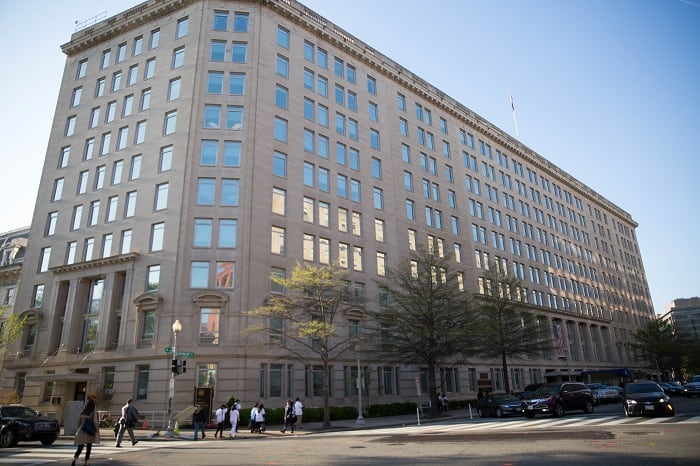The siege of Mosul is not impenetrable.
"The enemy can still bring foreign fighters into Mosul," Army Col. Christopher Garver, a Defense Department spokesman in Baghdad, said Wednesday.
"The city itself is not isolated, and that will be the first step of the Iraqi plan. As we've seen in Fallujah and as we saw in Ramadi, they want to isolate that city, surround it with forces and prevent folks from coming and going. They haven't got to that part of the plan, yet," Garver told reporters at the Pentagon.
The Iraqi forces, backed by U.S. air power and ground-level combat advisers, are preparing to attack Mosul, but the timing remains unclear and many experts wonder whether it will happen before the end of the year.
Cutting off the transportation and supply lines around Mosul is a key piece of the strategy for defeating the Islamic State militants and ousting them from the largest city they control.
Access is restricted, but sealing off the city entirely from the outside world is proving to be difficult.
"One guy with the backpack on, walking across the desert, it's very hard to stop all those individuals or one truck bringing in a foreign fighter," Garver said.
"But what we don't see any more are the convoys of foreign fighters being brought in," he said.
Routes leading north and east from Mosul are blocked by Kurdish peshmerga.
A key step toward isolating the city came in July when the Iraqis began to cut off the route south from Mosul by seizing a key military base, the Qayyarah West airfield, on the western side of the Tigris River and constructing a temporary bridge linking it to the main Iraqi army logistics hub on the river's east side at Makhmour.
Last year, the U.S. and Iraqi military sought to block Mosul's western side when the U.S. military deployed ground-level combat advisers to support Kurdish forces in the battle for Sinjar, located along a key transit route heading toward the Islamic State territory across the Syrian border.
For now, American military support remains limited and top Pentagon officials emphasize that the Iraqis are dictating the pace of operations.
The White House in July approved an additional 560 U.S. troops for Iraq, bringing the total authorized force level to more than 4,600. But on Wednesday fewer than 3,900 of those U.S. troops were in Iraq, a defense official said.
In April, the White House had authorized the use of U.S. Army Apache attack helicopters to provide close-air support for Iraqi combat units. But so far, commanders have sent those aircraft into combat only twice.
In April, the White House authorized U.S. combat advisers to deploy closer to the front lines with Iraqi brigade and battalion units. But so far U.S. troops have remained at the Iraqis' division-level headquarters with one exception — in July a team of American forces deployed with an Iraqi engineering battalion to the site of the new bridge over the Tigris River for an inspection.
The U.S. commanding officer in Iraq, Army Lt. Gen.Sean MacFarland, "has not directed forces down to live at the battalion level and I'm not sure he's going to do that," Garver said.
"He has the authorization to do that, but I think he sees it right now as we do it on a limited basis when it will make the most impact on the battlefield and we don't anticipate seeing advisers with every battalion. You know, every battalion gets a stack of advisers on a battlefield.
"There's a force-protection issue that comes into that as well," Garver added. "Every time you're putting advisers at a lower-than-division level, the farther down you go, the closer you are to risk and the more force protection you have to take into account."
For now, the Iraqi army is trying to consolidate control over the ground seized during the past several months.
"You're not seeing a lot of forward motion right now," Garver said. "The units are now preparing for the next big fight, which as we know, is going to be on the way to Mosul.
Andrew Tilghman is the executive editor for Military Times. He is a former Military Times Pentagon reporter and served as a Middle East correspondent for the Stars and Stripes. Before covering the military, he worked as a reporter for the Houston Chronicle in Texas, the Albany Times Union in New York and The Associated Press in Milwaukee.




